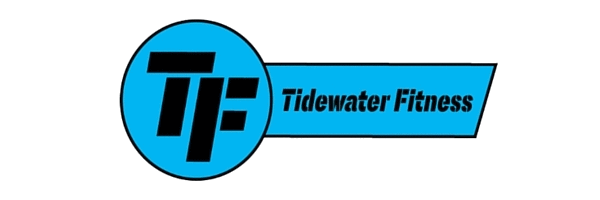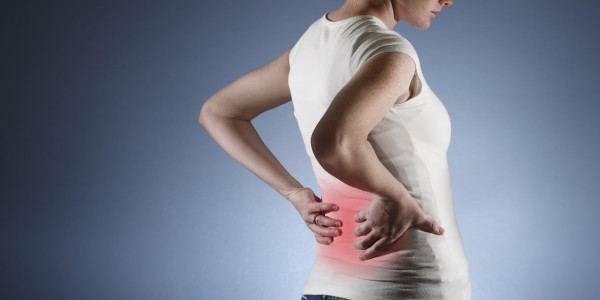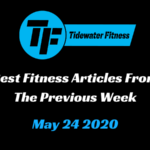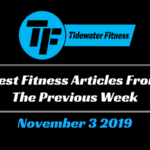According to statistics, 80% of people will experience some sort of back pain during their life (1). Those who have suffered or are currently suffering from it know what a hassle this is. It can keep you from doing things you love.
Unfortunately, there are many different reasons why you may have back pain. This makes it hard to pinpoint exactly what the root cause is without a proper assessment.
However, of all the clients I’ve worked with, I have found several similarities. These include:
a. Weak or under-active abdominal muscles
The abdominals play a significant role in the ability to stabilize the entire trunk. If they are not working properly, other muscles (i.e. the muscles of the low back) have to pick up the slack. This means those muscles have to work overtime to perform a task they are not used to doing.
b. Weak or under-active glutes
Going along with the point from above, the glutes play a significant role in stabilizing the low back (2). When the glutes contract, a compressive force is created at the sacroiliac joint. This compression aids in stabilization and force transfer between the upper and lower body.
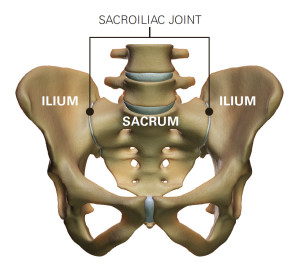
c. Cannot disassociate the hips from low back
When you bend over, all the movement should come from the hips. This is what’s known as a hip hinge. If you can’t hip hinge effectively, the tendency is to move through the low back. Doing this over and over, can create wear and tear on the lumbar spine.
These 3 factors aren’t the cause of pain for every single person. But, the majority of people suffering from low back issues will probably experience at least one of them.
For these people, exercise selection is extremely important. One of the best movements I have found to reduce low back pain is the pull-through. The reason being is it combats all three of the issues above.
Here’s how you do it:
- You can use a cable machine or a band, either will be fine.
- For the cable machine, use a rope attachment at the lowest point. If using a band, just loop it through an immovable object near the floor.
- Grab the rope or band with both hands and step forward.
- With the feet about shoulder-width apart and knees bent slightly, think about pushing your hips back to a wall behind you. Allow your upper body to move toward the floor at the same time. The hands will move between the legs as you do this. (Be sure to keep the low back from rounding. The entire back should be flat.)
- You should feel a nice stretch in the back of the thighs at the bottom position. Then push your hips forward and stand tall. You should feel your glutes squeezing to get you back to the top position.
- Click here for a video demonstration.
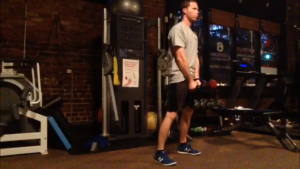
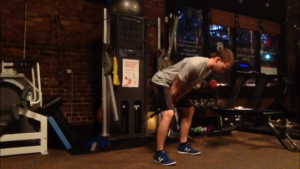
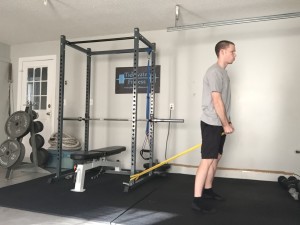
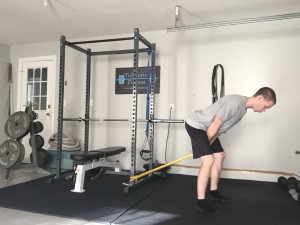
So, why is the pull-through effective?
A lot of exercises that work the glutes can also place tremendous stress on the low back. The pull-through effectively targets the glutes without the unwanted stress.
It also forces you to sink back into your hips as you bend over. This allows you to practice the hip hinge along with improving hip mobility. These are two big players in improving low back pain.
Finally, the resistance from the cable or band pulls you backward. You have to resist this pull to stay balanced in the correct position. The abdominals help you accomplish this task.
*****
As you can see, the pull through can be quite the effective remedy. Shoot for anywhere in the 12-15 range. Don’t worry about how much weight you can lift here. The focus needs to be on quality and improving the hip hinge movement.
Be sure to add it into your own training programs if you suffer from low back pain and you should notice a difference when done consistently.
References:
1. http://www.ninds.nih.gov/disorders/backpain/detail_backpain.htm
2. Barker, PJ. et al. Anatomy and biomechanics of gluteus maximus and the thoracolumbar fascia at the sacroiliac joint. Clin Anat. 2014 Mar;27(2):234-40.
Photo credit:
1. http://southcountyspinecare.com/
2. http://www.frontrangeorthopedics.com/
